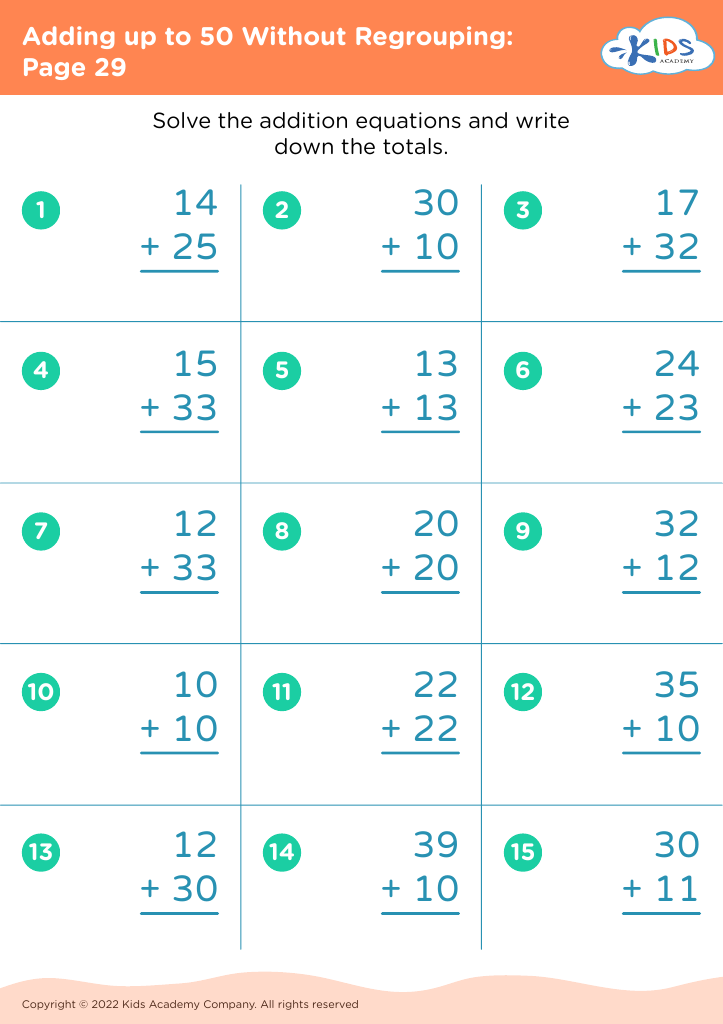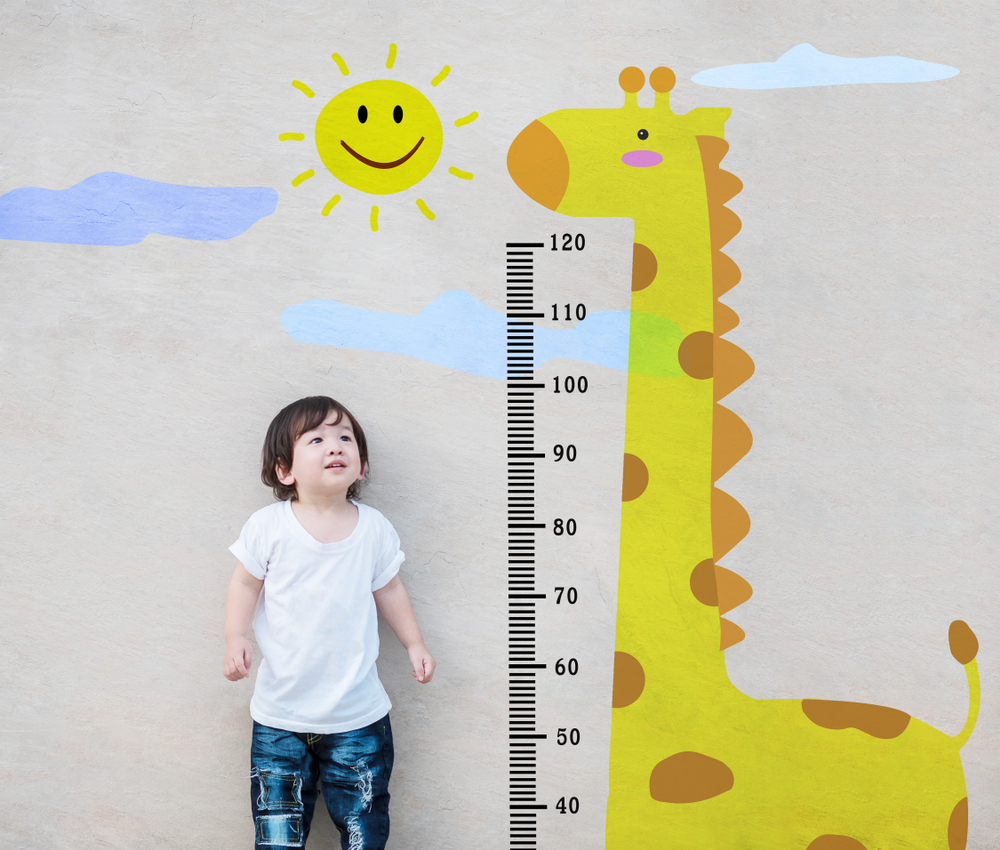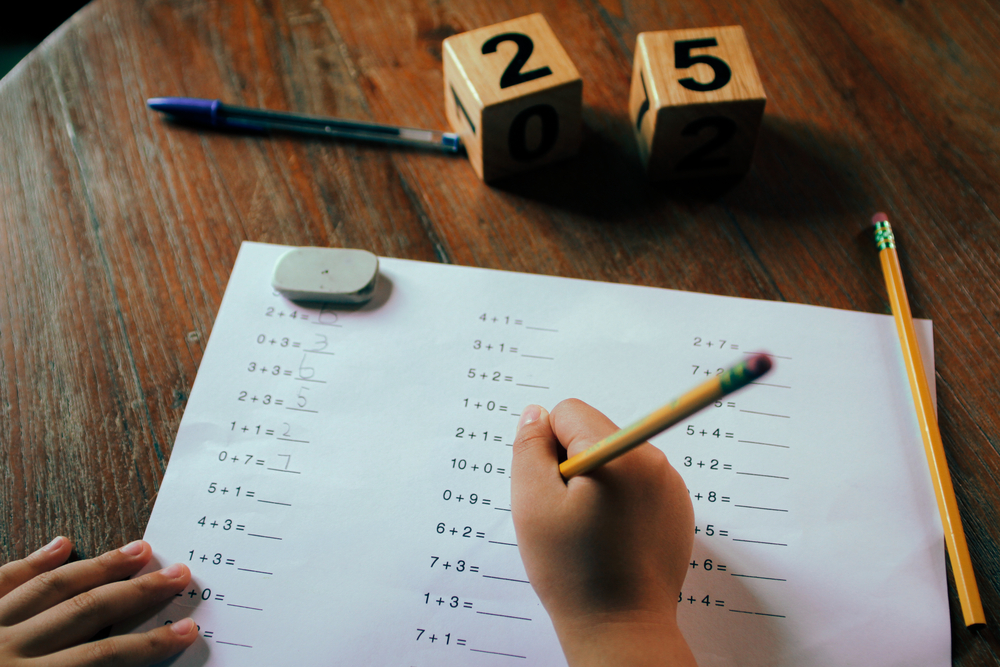Comparing objects Math Worksheets for Ages 5-7
8 filtered results
-
From - To
Explore our engaging "Comparing Objects Math Worksheets for Ages 5-7," designed to enhance young learners' skills in recognizing differences and similarities between items. These worksheets provide a fun and interactive way for children to develop critical thinking and early mathematical skills. With colorful visuals and relatable everyday objects, kids will practice comparing sizes, quantities, and attributes while stimulating their analytical abilities. Ideal for home or classroom use, these resources offer a seamless blend of education and enjoyment. Empower your little ones to become confident problem solvers as they embark on this exciting mathematical journey! Perfect for early learners and educators alike!
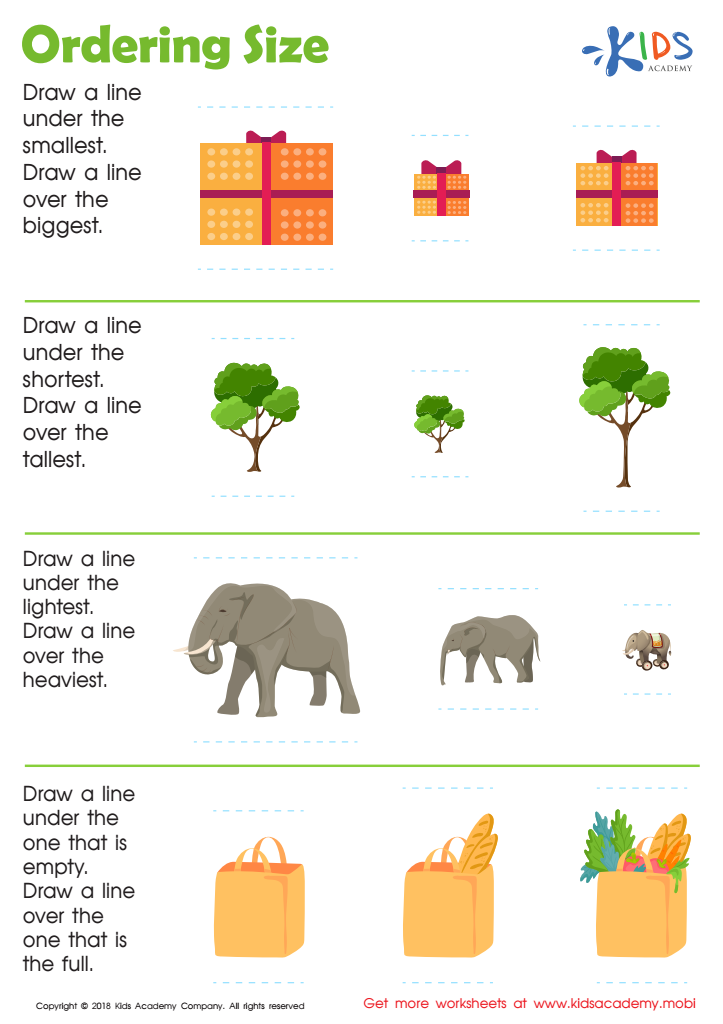

Ordering Size Worksheet


Shapes of All Sizes Worksheet
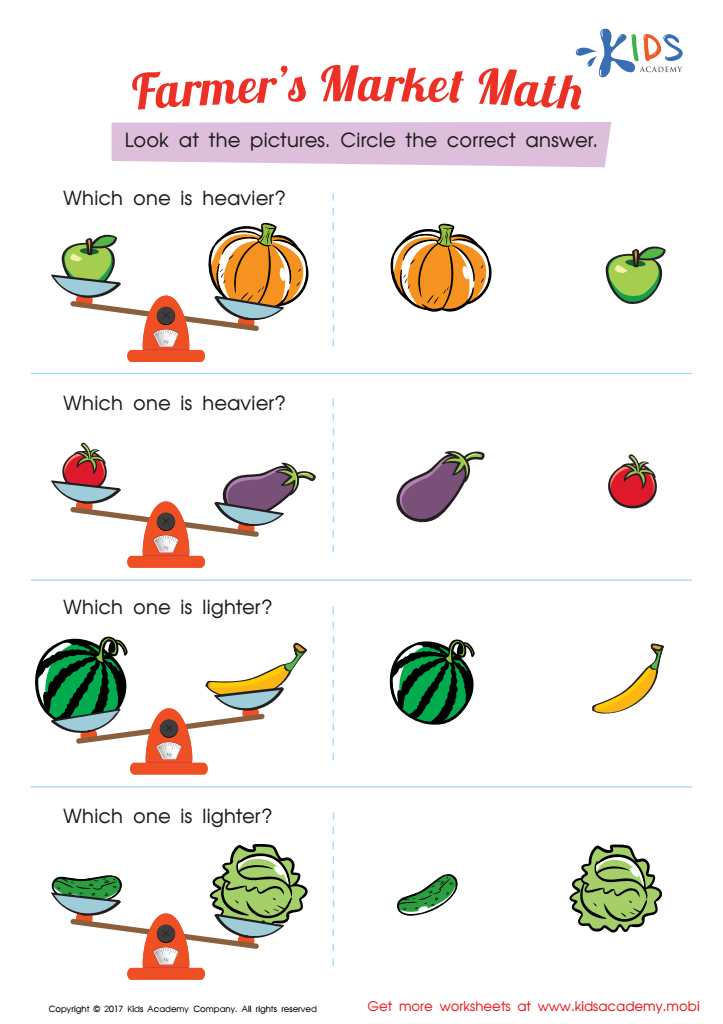

Which One Is Heavier Worksheet
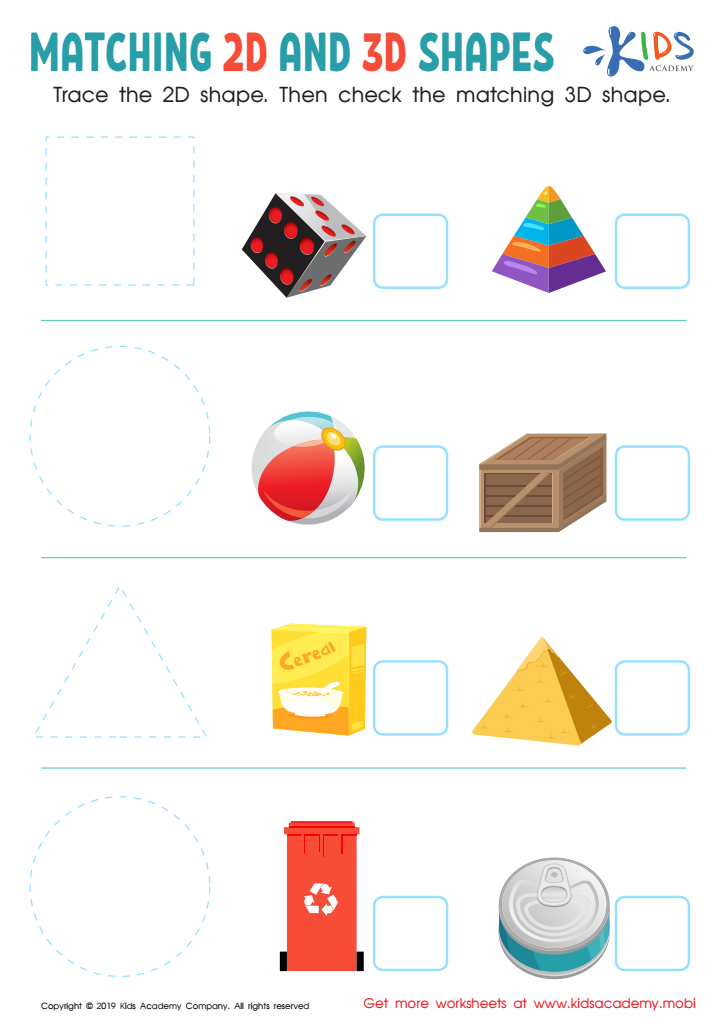

Matching 2D and 3D Shapes Worksheet


Heavier or Lighter? Worksheet


Classifying by Size Sorting Worksheet
Comparing objects in mathematics is a foundational skill for children ages 5-7. At this age, children are developing critical thinking and analytical skills, both of which are crucial in their understanding of the world around them. By learning to compare objects based on attributes such as size, length, weight, and volume, children not only engage in hands-on learning but also enhance their observational skills.
Parents and teachers should care about this area of mathematics because it lays the groundwork for more complex mathematical concepts, such as measurement and data analysis. Through comparing objects, children learn to categorize and make decisions based on their observations, fostering important skills in reasoning and problem-solving. These activities can also encourage discussions about similarities and differences, promoting language development and vocabulary expansion.
Moreover, comparing objects can be a fun and interactive experience! It offers parents and teachers a chance to connect with children through play, utilizing everyday items, which makes learning tangible and enjoyable. As children build these essential skills early on, they are better prepared for future academic challenges, making comparison both a practical and valuable area of focus in early education.
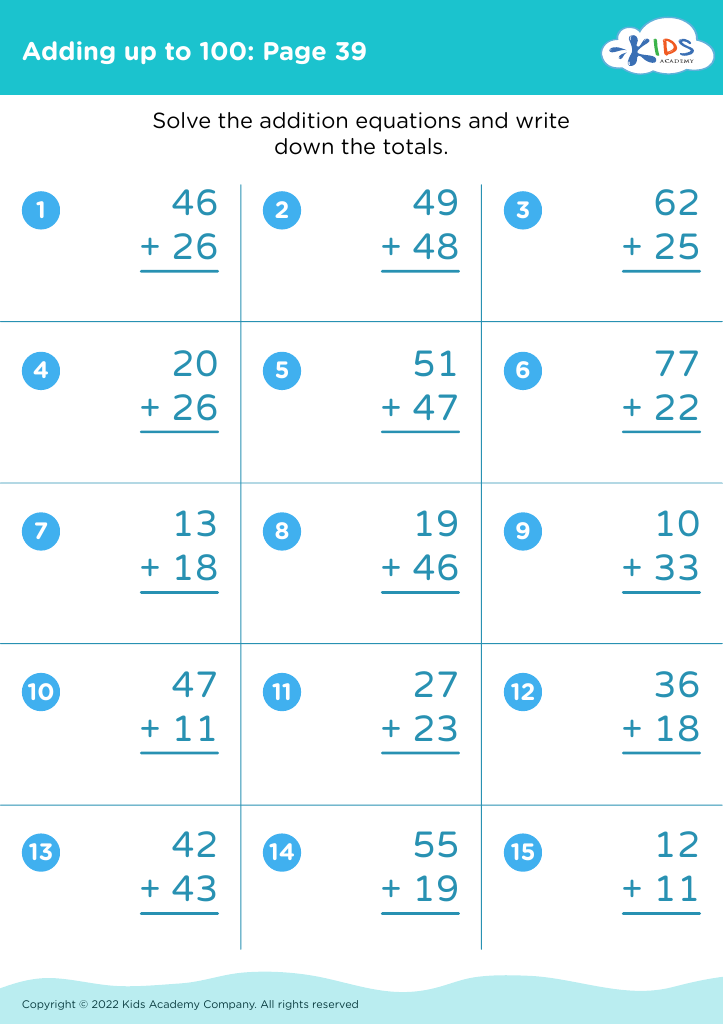

 Assign to My Students
Assign to My Students
